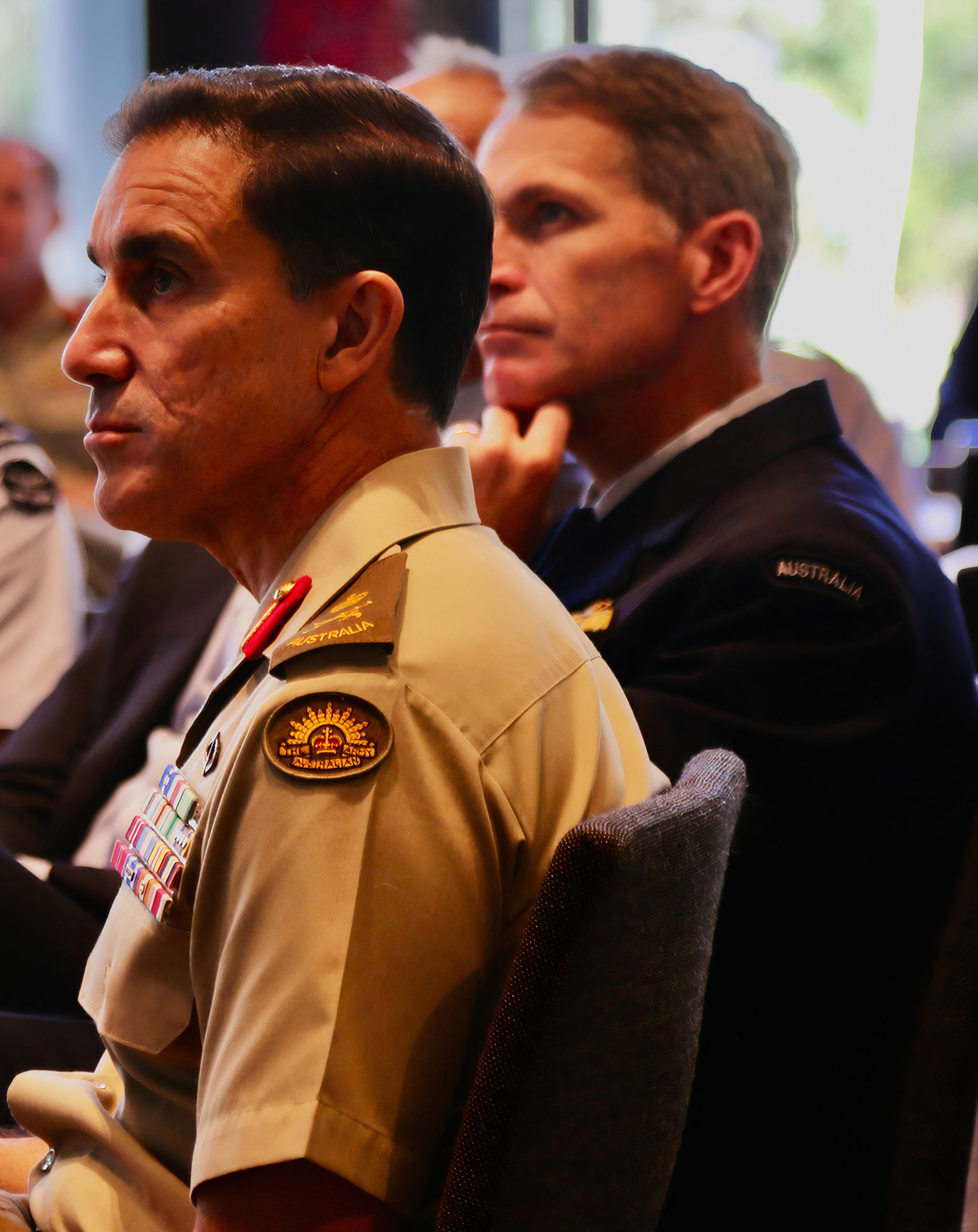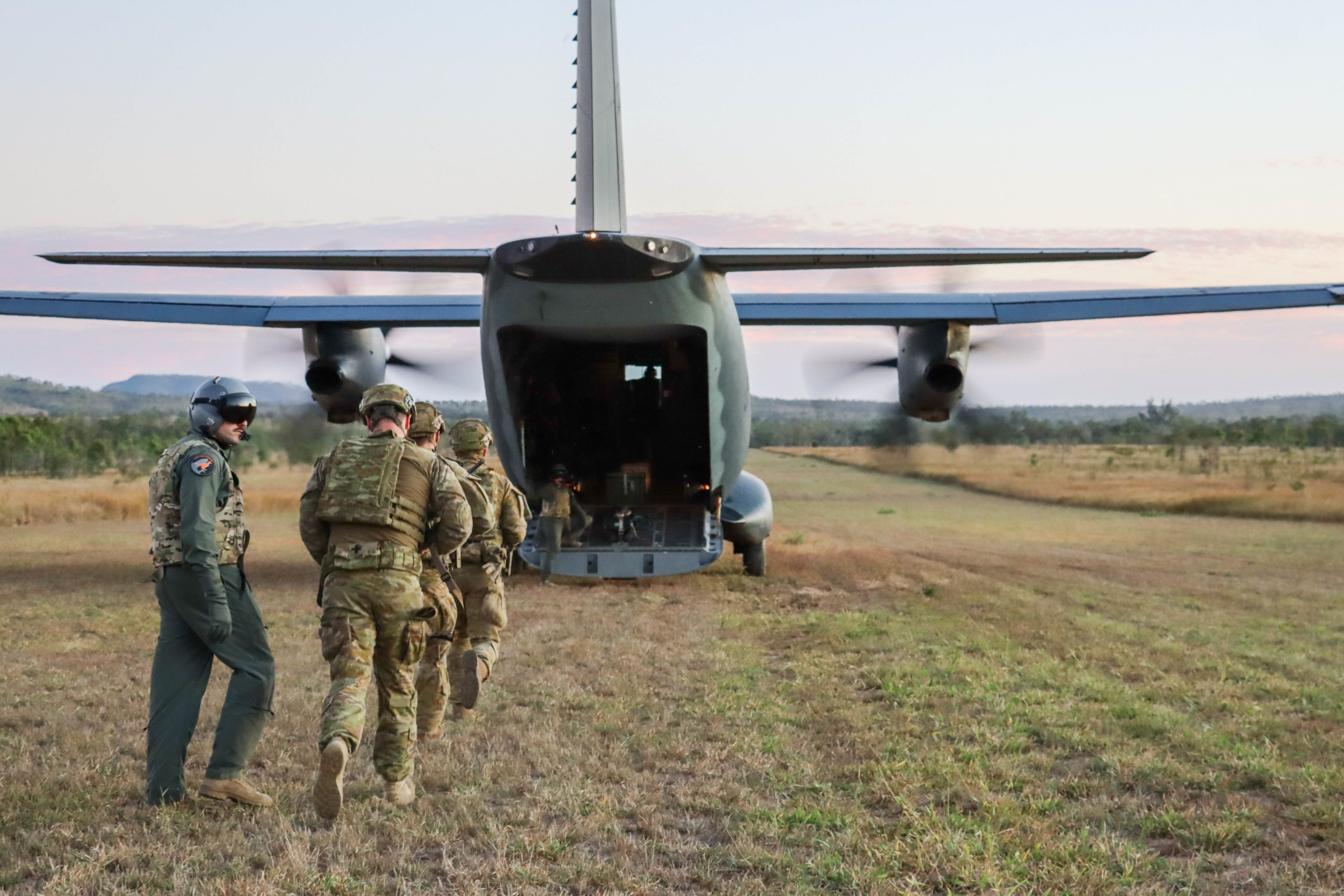By Robbin Laird
The Sir Richard Williams Foundation Seminar on 30 March 2023 focused on the way ahead with regard to deterrence of adversaries in the region, notably with both the behavior and the capabilities of the PRC in mind.
The question of refocusing the role of the ADF in the defense of Australia and its role in the region was a key element for consideration. Clearly, the joint force focus is significant but is the role of service components in the joint force as it adapts its role in the new strategic context.
At the seminar, LTGEN Simon Stuart, COS of the Australian Army, provided a general look at the deterrence challenge, the role of the ADF and of the Australian Army. He concluded: “From an Army perspective, from the contribution of land power to that integrated force, we offer presence, persistence, asymmetry through first-mover advantage, utility, and incredibly good value for money.”
I had a chance to continue the discussion with him on his perspective when we met at his office on April 10th. Here he further elaborated on how he saw the role of the Army within the evolving joint force whose mission was being refocused on the region.
LTGEN Stuart started by focusing on what he viewed as key elements of Army’s value proposition for the joint and increasingly integrated force. He underscored in this context Army’s key role in C2, logistics, domestic security and providing national infrastructure within Australian territory for regional power projection.
He then argued that Air Force and Army are developing and will do so even more in the future their working relationship at the strike and shield aspect of defence of Australian defence infrastructure and territory. He put it this way: “How will integrated air defense be worked in terms of the overall approach to leveraging our strategic geography and our force projection forces?”
LTGEN Stuart highlighted a key element for shaping the way ahead, namely working force integration, including force design and with allies as well. “We must have an architecture that we are building to in terms of our platforms and systems which allow us to leverage the benefits of an integrated force. This also enables us to better plug into allied and partner forces through exercising rotational forces and where appropriate operating for joint basing.”
The geography of Australia is a key consideration in shaping a way ahead for both the direct defense of Australia and the projection of power from Australia. Earlier, I had discussed the geography aspect at length with Professor Andrew Carr, who emphasized the following: “We have an archipelagic country that has very distinct cultures that are also connected and for a defence perspective, that leads to a different way of operating or thinking about your ability to move across and between settlements.
“Rather than being tied to the direct defence of every specific inch of territory. How do we extract benefit from such an approach? How you can we move force between sea and lands seamlessly and recognizing that it’s not simply the defence of your territory but having the ability to move move out into the region in cooperation with partners and allies, where Indonesia is the largest traditional archipelago in the world? There’s many significant archipelagic nations in the South Pacific, and we are going to need an ADF that is able to operate seamlessly across those environments as well.”
Carr’s characterization provided a way to think about two key Australian Army contributions. The first is clearly the presence of Army structure throughout the country thought of an archipelago. And second, the role of the Army in working in the region with partners, and exercising on their territory as well, or, in other words, working the neighborhood.
LTGEN Stuart spoke at some length to the territorial presence role of the Australian Army as underwriting the ability for direct defense and shaping an effective foundation for joint force power projection from Australia.
“At the foundation and during my presentation, we emphasized the importance of being able to leverage Australian geographically for strategic purposes. The Army is located in 157 locations around the country, from the most northern tip of Cape York to Tasmania and from the West to the East coast. And our connection into local towns, cities and communities is through these 157 locations where our people are located.
“One of the key design principles for our Army Objective Force is what we call the total workforce system. We have a flexible set of arrangements for people to work full or part time or a combination of both throughout their career in the Army. That helps us have a workforce in 157 locations, as some of these are sparsely populated.
“Our capacity to leverage our total workforce system means we can leverage our part time brigades to project force from the bases South of the Tropic of Capricorn into the northern geography to reinforce and protect our sustainment capabilities in that part of the country.
“We have restructured our 2nd Division to be a division which leverages our total workforce system. Its six formations leverage our part time people in great part.”
With recent natural disasters in Australia, such as the bush fires, the Army has been mobilized to help the nation in non-defense crises. This has meant that C2 has been used for national mobilization as well as transport equipment to move force to the point of need.
There is the challenge of overtaxing the Army for such tasks, but it does suggest that mobilization is a whole of nation effort, not simply a tip of the spear warfighting support effort.
Because of concern for overstretching the Army in dealing with national disasters, Australian analysts such as Professor John Blaxland have suggested need for a national mobilization system which engages the citizenry to deal with national disasters and could operate as a reserve for national crises, up to those of war itself.
We did NOT discuss this, but clearly if the government is to consider whole of nation solutions for national security and defense, such ideas need to be considered.
We then discussed one aspect of mobilization which has become clearly evident, namely a relationship between government and industry to provide for war materiel at levels of effectiveness and not just in time efficiencies. Alan Dupont and others spoke at the seminar of the impact of the Ukraine war which has demonstrated the absence of the kind of arsenal of democracy which Australia and the liberal democracies need.
We did discuss the munitions challenge which requires significant investment in development and the buying of weapons stockpiles. With regard to Australia, LTGEN Stuart noted: “We need to the capacity to store, maintain, and perform upgrades on guided weapons in Australia using an Australian workforce. And that is a prerequisite to the capacity to then be able to either provide component manufacture or assembly or actually to manufacture guided weapons and explosive ordnance in the country.”

We did not discuss the role of the Australian Army in the neighborhood although we did discuss that in an earlier visit. This is how he put during the 2022 discussion:
He argued that “we are a convening power. What is our strategy?
“Fundamentally it comes down to working with the alliance we have with the United States and other like-minded states, to promote shared interests. And in those contexts, we are focused on being a net contributor to alliance security as well as our own.
“And we are addressing how we work together to build the interior lines of defense in the region – to use land – parlance in the Indo-Pacific.”
How do you further enhance and develop such an approach?
According to Lt. General Stuart: “You take the architecture that already exists through the multilateral activities we do with Indonesia on activities like Garuda Shield, Balikatan with the Philippines, Cobra Gold in Thailand, Talisman Saber in Australia. You build those out as multilateral activities, and connect them in a way that strengthens international partnerships while enabling a persistent multilateral presence.
“And that persistent presence and multilateral interaction has a range of key strategic aspects. First, we get to know the environment and how to operate within it. We get placement and access where our multilateral forces need it. We can leverage the relationships, and importantly we provide an alternative to what the authoritarian states are offering as a future for our partners in the region.
“If we need to respond militarily in the region, we already have a grid and network established. We will have communications networks in place and have exercised mission command. And we have already worked through multilateral formations, so that you have a working C2 model, with all the authorities, in place and an understanding of how you plan, how national authorities affect your planning, how you force project, how you do logistics, and who’s going to contribute what to which part of any potential fight.”
But he argued that “we are not fit to purpose today to be able to do what we need to do in this strategic space.”
For LTGEN Stuart, the Australian Army has a key role to play in the way ahead for the direct defense of Australia and the role of the ADF and the Australian nation in the region. Doing so will take imagination, resources and commitment – qualities which are always in short supply, at least in my view.
Featured photo: No. 35 Squadron loadmaster, Corporal Jakeb Thorogood loads soldiers from the Army’s 3rd Brigade on a C-27J Spartan at Cormorant airfield, west of Townsville during Exercise Ready Spartan Prove.
Credit: Australian Department of Defence, 8 May 2023
See also, the following:


